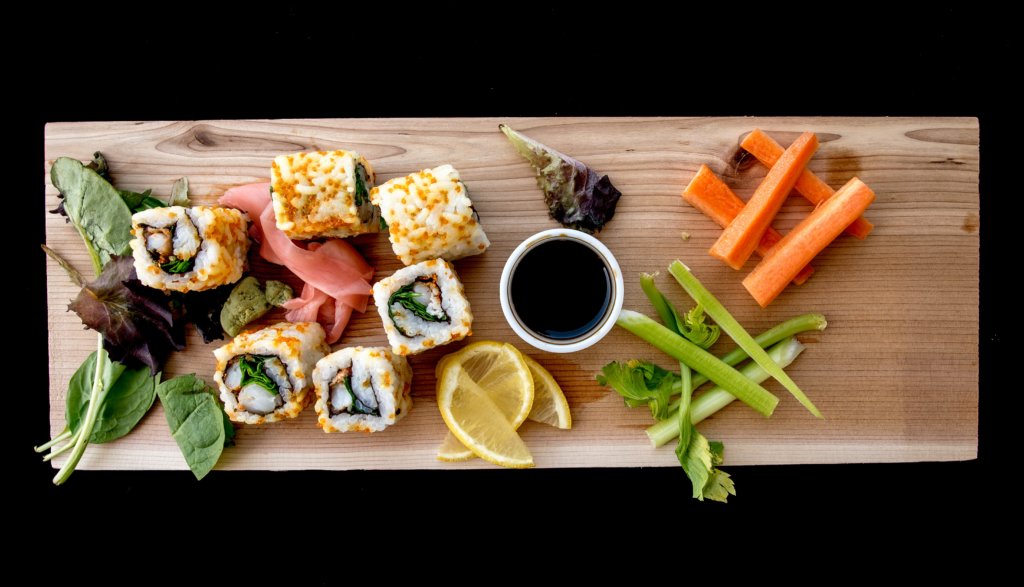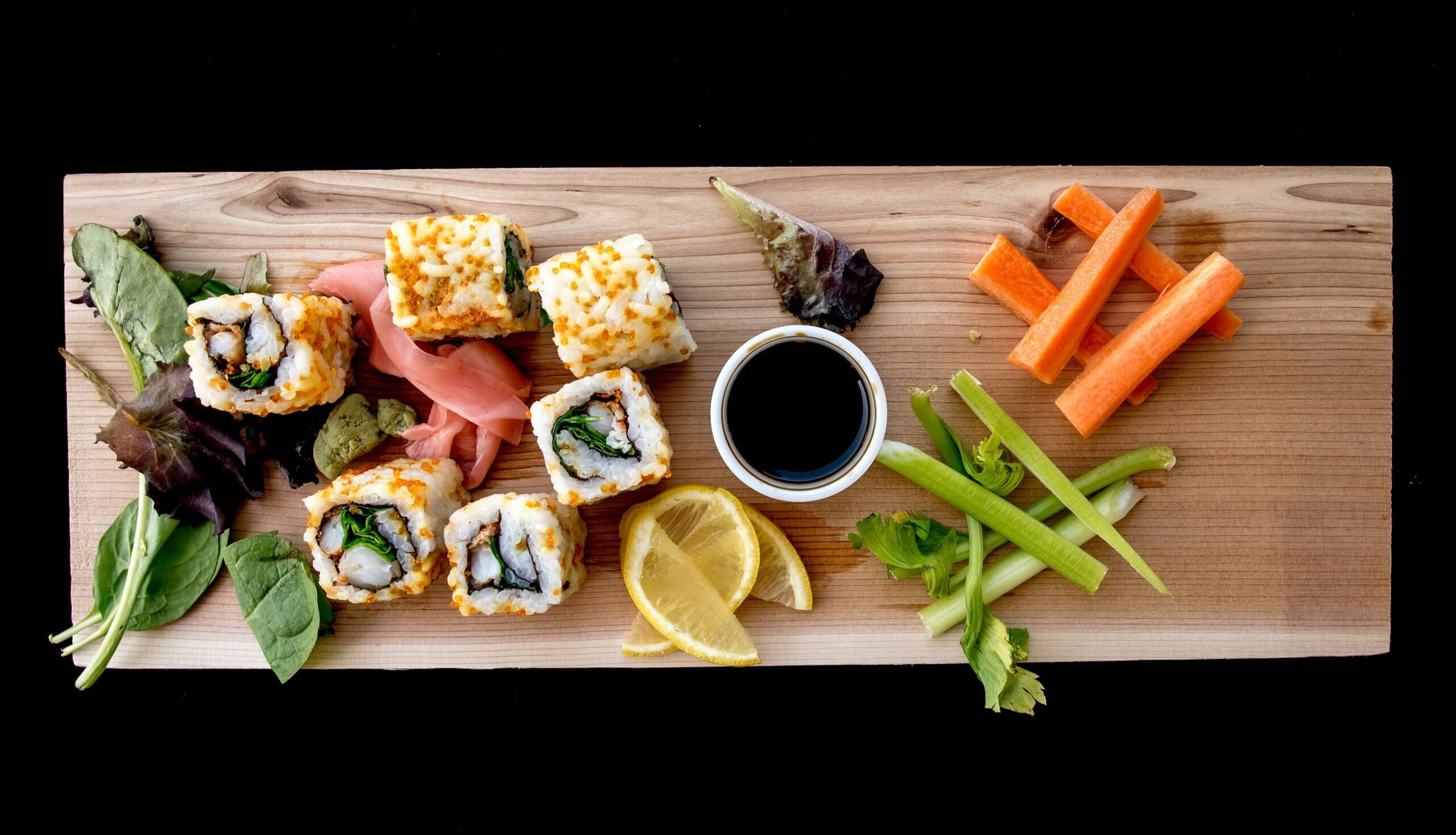Sushi may or may not be a calorie bomb.
We have one basic problem with eating sushi – usually we can’t eat it as much as we would like (and most often, as far as the calorie content of our diet allows us: D). Taught by our own experience, we rush to help you. We slim down sushi!
Imagine a situation where you can eat sushi for lunch or dinner with a calm head!
After reading this entry, you will be able to do it yourself!
If you are sushi fanatics like us, we have great news for you!We have prepared and tested the sushi recipe especially for you, which will not only satisfy your cravings, but also perfectly fit into your diet, while providing you with full-value protein, unsaturated fatty acids and good quality carbohydrates!
Of course, if you know us well, you know very well that we are far from extreme and we are absolutely not against a weekend trip to sushi, to your favorite restaurant! However, then such sushi (among others due to the sugar contained in it and depending on the type of sushi, addition of fish / shrimp fried in tempura) should be treated as a recreational meal. And who of us would not like to eat your favorite sushi even several times a week, as part of your typical healthy and balanced meal for lunch or dinner? And if we add to the fact that you can eat it even slightly more because of the lower calorific value compared to the traditional ….? The answer is obvious.

Sushi ingredients vs calorie dishes
According to the traditional sushi recipe, to make vinegar, sugar is used, which quite strongly increases the caloric content of the dish. A much better solution as a substitute will be the use of erythritol or xylitol.The calorific value of sushi also depends on the species of fish. The least caloric are lean white fish and crustaceans, followed by tuna, and the most – oily fish (eel, salmon and mackerel).
In the context of caloric content will be important additions that we use to prepare sushi. Additives such as full-fat cream cheese, egg yolk, tempura or mayonnaise sauce can significantly increase the caloric value of a meal.
Does this mean that while on a diet we have to give up this delicacy? Of course not! All you need to do is remember a few tips when preparing or ordering sushi, which will allow us to improve its nutritional value while reducing calorific value:
Basic tips:
- to make vinegar instead of sugar, use erythritol or xylitol;
- choose lean fish or seafood sashimi (raw meat without rice) or sushi nigiri (containing more fish than rice) instead of maki sushi;
- choose fish and seafood grilled, baked, steamed or raw, and avoid those fried in tempura, in a vegan version tofu marinated in soy sauce will work great;
- as an addition to sushi, choose low-fat natural cheeses or yogurt with a higher protein content, avocados, raw vegetables and mushrooms;
- when preparing sushi at home, if you like, then you can choose whole grain brown rice (gives a greater feeling of satiety, due to the fairly high fiber content), an interesting alternative to rice may be millet or quinoa;
- give up greasy sauces based on mayonnaise or cream, put on soy sauce, wasabi or light yogurt sauces;
- eat sushi with chopsticks, even if it’s not perfect! Difficulties in handling chopsticks will make you eat more slowly, thanks to which the information that you are full has the chance to reach the brain in a timely manner (usually it happens with a delay). Result? You will finish the meal without feeling overeating.
And finally, one more important point!
When preparing sushi, remember that most of the ingredients used are raw, so they must be absolutely of the highest quality, fresh and thoroughly washed. While with Our sushi you do not have to worry about calories, be careful not to overdo it with the amount of wasabi and soy sauce, due to the high content of sodium.
So now, let’s make a sushi! Here you will find a recipe!

